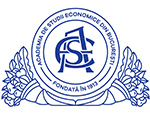Articles on Issue Theme

Dan OLTEANU
Academia Română
Following the credit boom which ended with the global crisis, most of the European economies have faced a credit crunch which strongly affected economic growth. In its turn, growth slowdown has hindered credit recovery, generating a vicious circle. This paper aims to explore the behaviour of causal relationship between domestic credit and domestic product, for a sample of European countries, over the 2004-2013 period. Also included are comparative analyses between the causal patterns of Eastern and Western European countries, before and after the output collapse. Firstly, we find that credit flow, instead of credit stock, is the most adequate measure when analysing the correlation with the collapse and recovery phases of output. Secondly, the panel data estimates confirm that the credit-growth correlation is much stronger during the recession which started in 2007, compared with the previous ascending period. Thirdly, we conclude that real domestic credit flow variations precede, rather than follow the turning points of real GDP, though the country level data show mixed causal patterns.
ŒCONOMICA no. 3/2014
Keywords: credit, money supply, economic growth
JEL: E32, E41, E51
Domestic Credit and Economic Growth across Europe [Creditarea internă şi creşterea economică în Europa]
Select Issue:
Archive
Octavian-Dragomir JORA
Academia de Studii Economice din Bucureşti

Mara Andreea TUDOR
University of Chicago

Cătălin MURARAŞU
Academia de Studii Economice din Bucureşti

Ramona Iulia DIEACONESCU
Academia de Studii Economice din Bucureşti

Maria GHEORGHE (NIŢU)
Academia de Studii Economice din Bucureşti

Sorin-Nicolae CURCĂ
Academia Română

Revista ŒCONOMICA

Authors

